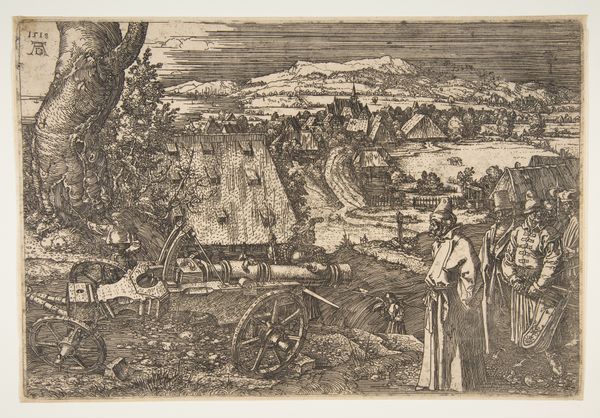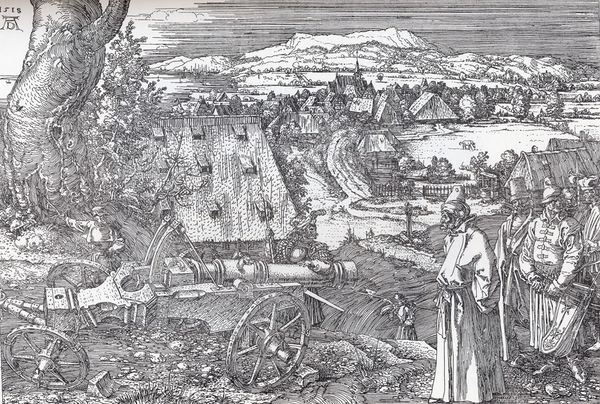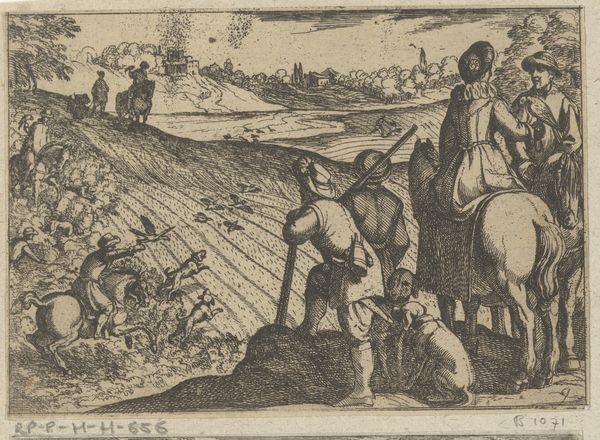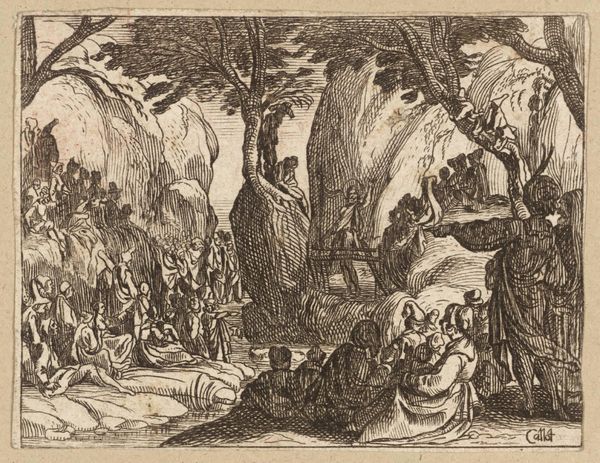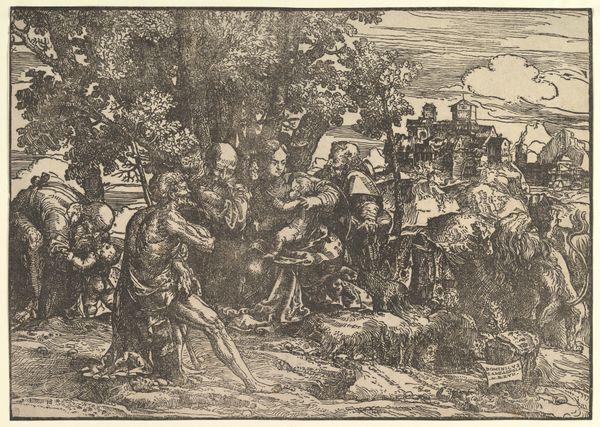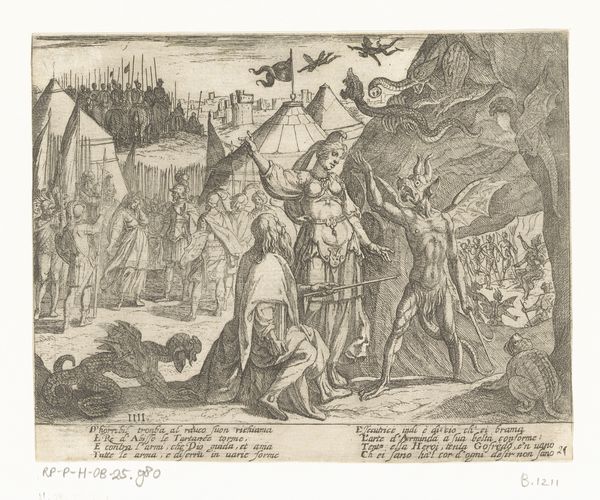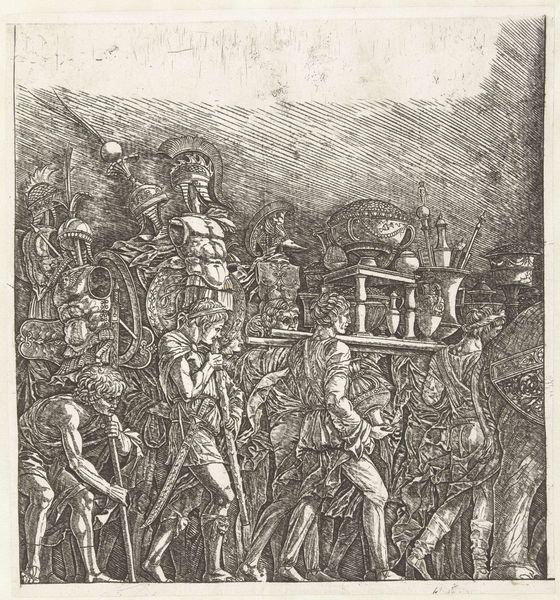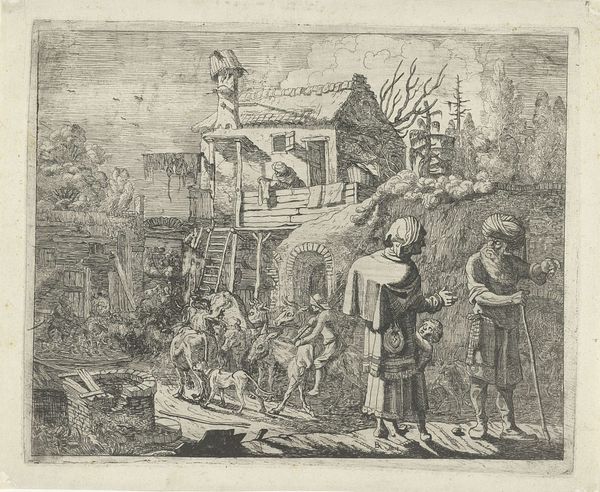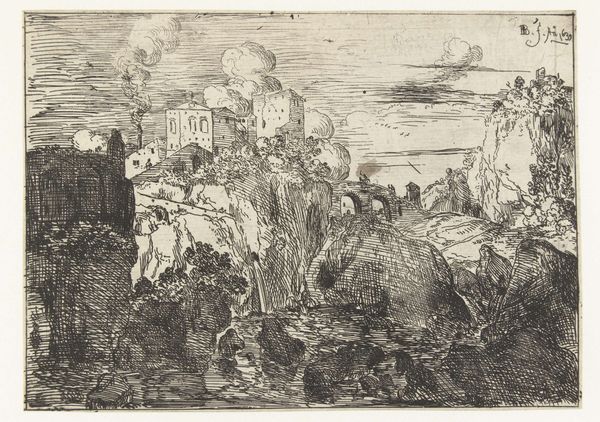
print, etching, engraving
#
ink drawing
#
pen drawing
# print
#
etching
#
landscape
#
history-painting
#
engraving
Dimensions: 8 9/16 x 12 1/2 in. (21.75 x 31.75 cm) (plate)
Copyright: Public Domain
Editor: Here we have "The Cannon," an engraving from 1518 by Albrecht Dürer, at the Minneapolis Institute of Art. What strikes me most is how such a peaceful landscape is juxtaposed with this incredibly powerful, destructive piece of machinery. How do you interpret this work? Curator: That contrast is key. Consider the historical context: Europe was on the brink of religious and social upheaval. Dürer, living through the Reformation, captures a society grappling with shifting power structures. What does the cannon, placed so prominently, symbolize to you in light of those power dynamics? Editor: Perhaps it’s about the rising power of the military and technology over traditional ways of life. It’s a sort of... disruption, right? Curator: Exactly. The cannon signifies a departure from established social orders. We need to think about how advancements in weaponry and warfare redefined European politics and economies, with consequences resonating even today in discussions of class and control. What do you think Dürer is saying about this shift by placing this technology within an idyllic scene? Editor: Maybe he is saying that violence will infect every corner of our world, despite our best intentions. It’s like this looming threat to everything peaceful, maybe a prediction. Curator: A prediction, certainly. Also, perhaps a lament. Remember, Dürer was deeply engaged with humanist thought. This piece raises fundamental questions about human progress, technology, and its impact on our social fabric. Editor: That's so interesting. I initially saw just a beautiful landscape disrupted by a cannon, but I see that the artwork's critique touches upon societal structures and impending conflict, all reflected in one potent image. Curator: Exactly, and reflecting on these societal dynamics deepens our understanding of our current moment. We’ve moved beyond just observing the image; we’re interrogating its place in the evolution of power and class structures.
Comments
minneapolisinstituteofart almost 2 years ago
⋮
The toolbox on this cannon bears the arms of Nuremberg, Albrecht Dürer's birthplace and home to several of Emperor Maximilian's arms foundries. What's more, the Turk at right is believed to bear the face of Dürer himself. The artist made just six etchings on iron, probably abandoning the medium because he was dissatisfied with the coarse, crumbly lines that resulted. Although he preferred the more controlled vocabulary of engraving, Dürer exploited the freedom of the etching needle in the muscular tree and distant landscape, creating naturalistic effects that would have a lasting impact on the artists of the Danube School, who made prints focused solely on nature.
Join the conversation
Join millions of artists and users on Artera today and experience the ultimate creative platform.
